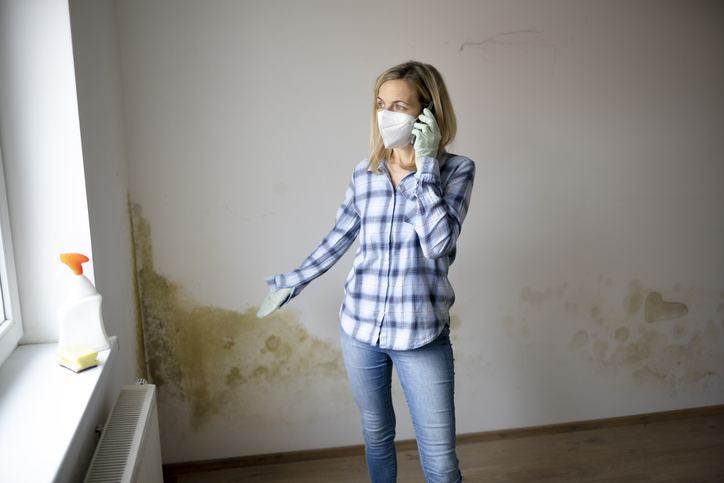Maintaining a healthy living environment in your home is a must and it includes dealing with mould issues. Mould is not only unsightly but can also have adverse health effects on you and your family if left unchecked. Here are some tips on how to best manage mould in your home.
Understanding the causes of mould growth is essential. Mould thrives in damp, dark, and humid environments, making spring a prime season for its development. The combination of increased moisture along with warmer temperatures, can create ideal conditions for mould to grow.
Identify problem areas. Start by inspecting your home for areas prone to moisture buildup, such as bathrooms and kitchens. Look for visible signs of mould, such as discolouration or a musty odour. Identifying these areas is the first step in effectively managing mould.
Control moisture levels at home. To prevent mould growth, control indoor humidity levels. Use exhaust fans in bathrooms and kitchens, ensure proper ventilation, and consider using a dehumidifier in damp areas. Repair any leaks promptly, including plumbing or roof leaks. Reducing moisture is key to mould prevention.
Make sure there is proper ventilation. Ensure good air circulation throughout your home. Open windows and doors when weather permits, allowing fresh air to reduce humidity levels and inhibit mould growth. Adequate ventilation can make a significant difference in mould prevention.
Keep the house clean at all times. Regular cleaning and dusting of your home are essential to prevent mould spores from settling. Pay close attention to areas where moisture can accumulate, such as window sills, shower curtains, and bathroom tiles. Keeping your home clean helps remove potential sources of mould.
Immediately address leaks and water intrusion. It’s essential to inspect your home for any leaks or water intrusion. Repairing roof leaks, sealing cracks in the foundation, and maintaining proper drainage around your property can help prevent moisture buildup. Addressing these issues is crucial for mould prevention.
Use mould-resistant materials. Consider using mould-resistant materials when renovating or repairing your home, especially in areas prone to moisture. These materials can be a valuable long-term investment, as they are less susceptible to mould growth.
Have regular maintenance and inspections. Schedule regular inspections to catch mould issues early. If you notice any signs of mould, address the problem promptly. Mould can spread quickly if left unchecked. Regular maintenance and inspections can help you stay on top of mould prevention.
Seek professional help. In severe cases or if you’re unsure how to handle mould, it’s advisable to consult with a professional mould remediation expert. They can assess the extent of the problem and provide safe and effective solutions, ensuring that mould is properly removed.
Educate yourself. Stay informed about mould prevention and management. Understanding the basics can help you take proactive steps to protect your home and health. Being aware of the factors that contribute to mould growth is essential for effective mould management.
Remember that mould can pose health risks, particularly for individuals with allergies or respiratory issues. Managing mould is essential for maintaining a safe and comfortable living environment. By following these tips and staying vigilant, you can effectively manage mould in your home and enjoy a healthier living space.

